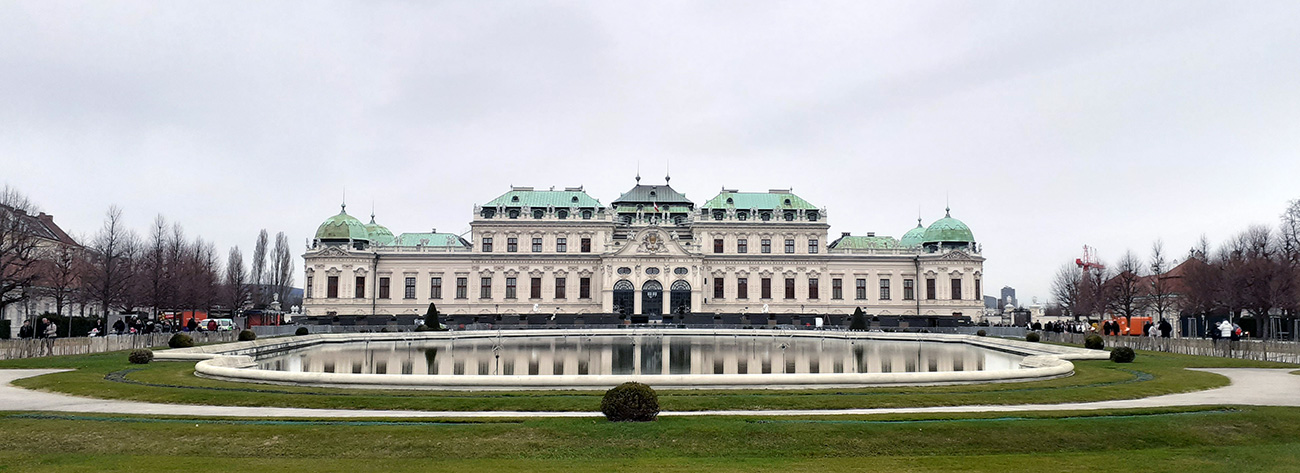„Museums are interesting. This place where we’re almost buying admission to take a break from our lives.“
Abbi Jacobson
Visiting Belvedere Museum
Dear Arad,
On 02.01.2024, I embarked on a journey into the heart of art, exploring the fascinating Belvedere Palace and Museum in Vienna. As Abbi Jacobson cleverly notes, museums are like a temporary escape from the hustle of daily life, and Belvedere Museum is no exception.

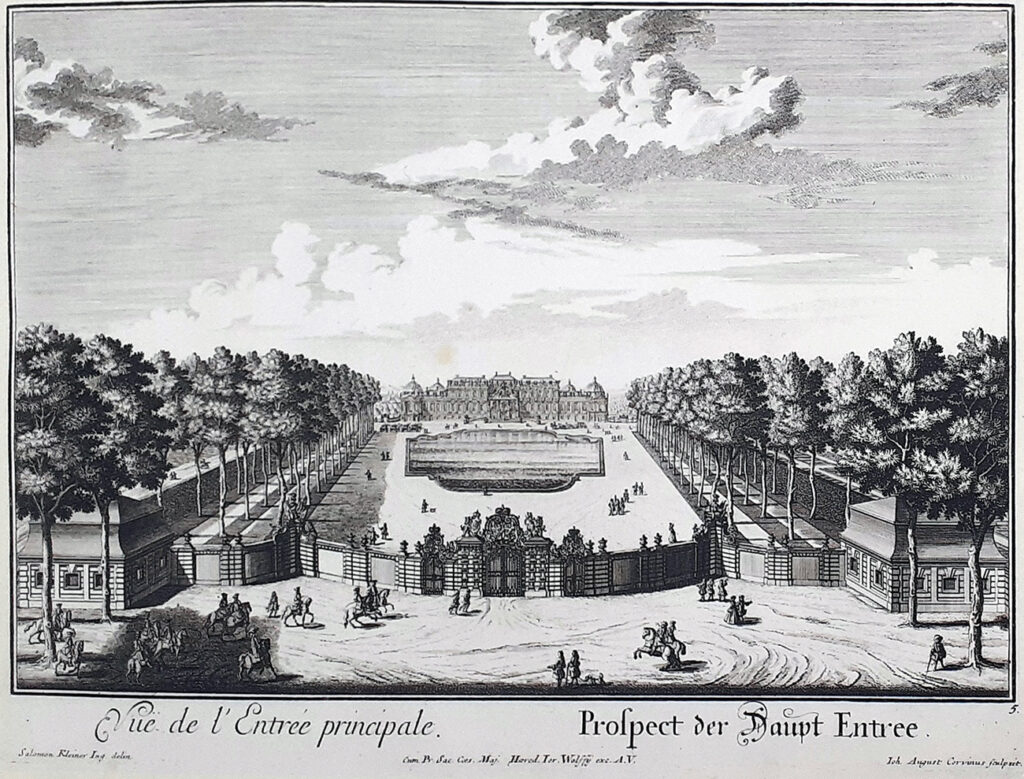





This historic palace, originally the summer residence of the legendary Prince Eugene of Savoy, is a Baroque masterpiece created by the brilliant architect Johann Lucas von Hildebrandt. As I wandered through its corridors, I discovered an array of Austrian art spanning from the Middle Ages to the present day. The works of renowned artists like Gustav Klimt, Egon Schiele, and Oskar Kokoschka adorned the walls, each piece a glimpse into the rich cultural tapestry of Austria.
The museum’s gardens, a visual feast of sculptures and greenery, have earned it UNESCO World Heritage status. The sculptures within, dating back to the 18th century, are nothing short of awe-inspiring. These masterpieces, meticulously carved with a blend of reality and fantasy, portray figures with lower bodies resembling majestic animals and upper bodies akin to humans or angels. It’s a testament to the artistic prowess of the creators and the significance attached to such works during the Baroque era.
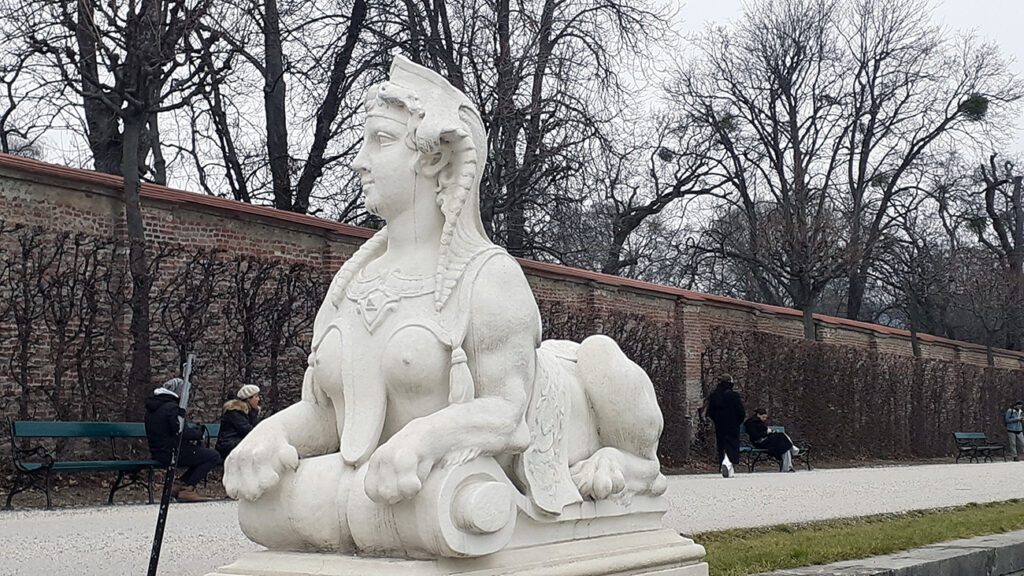
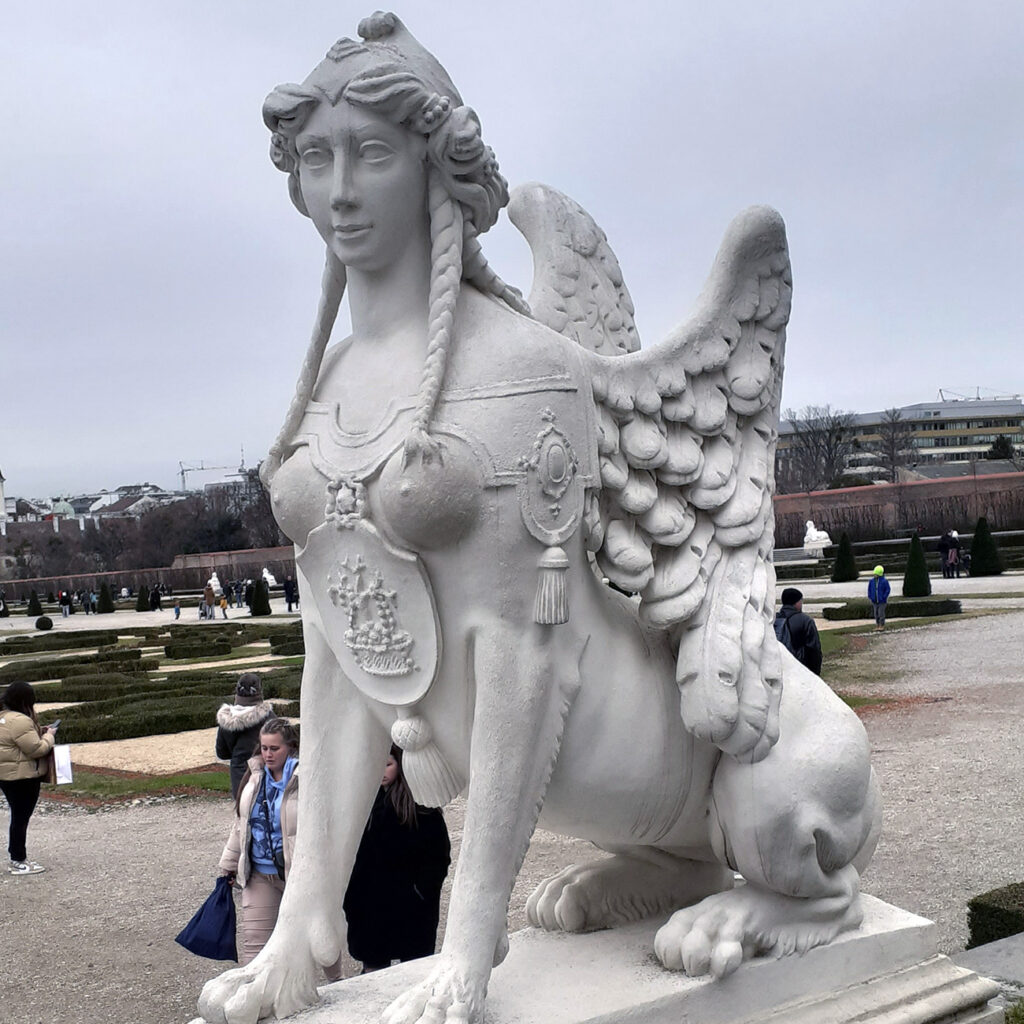
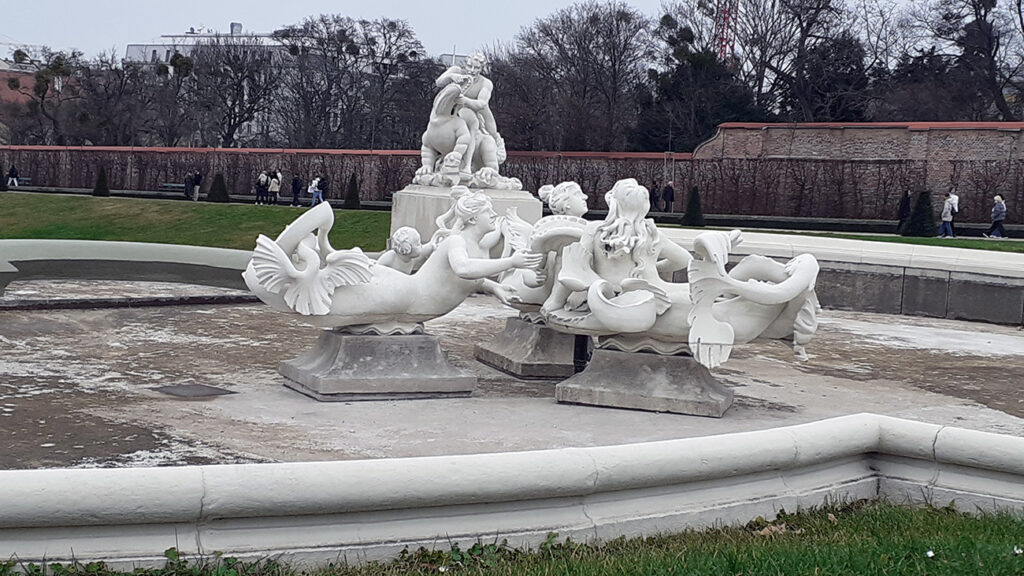





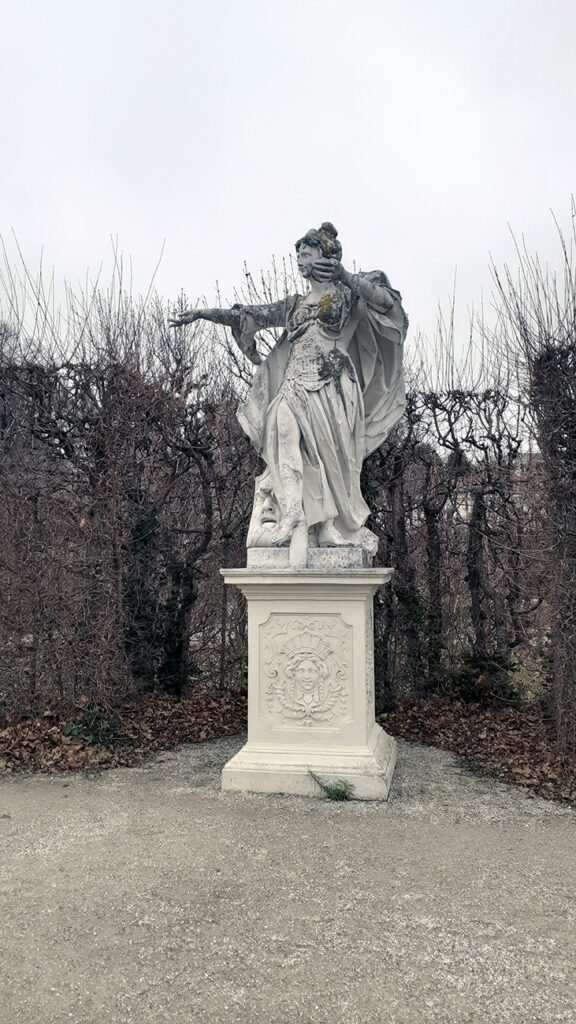
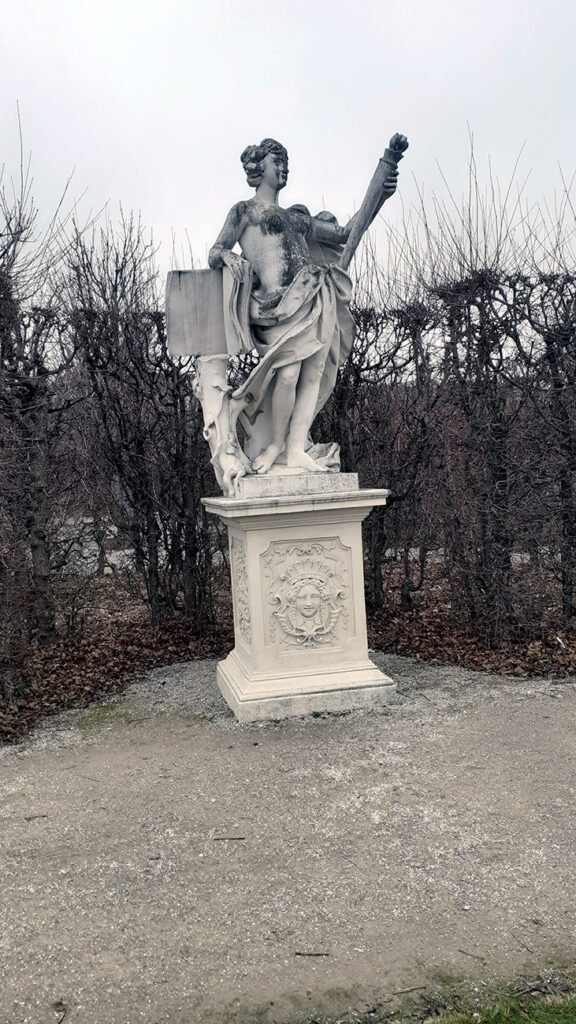
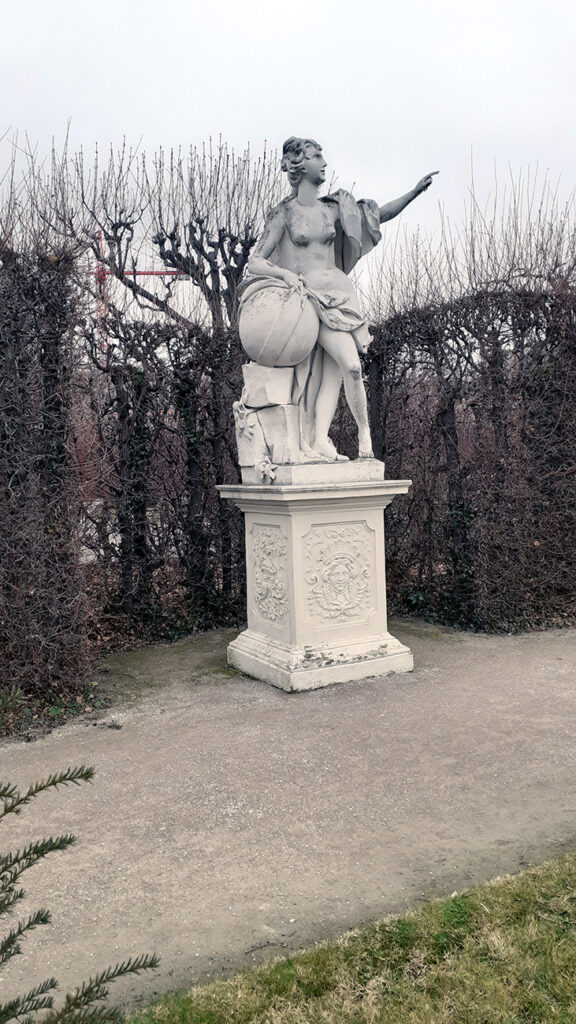



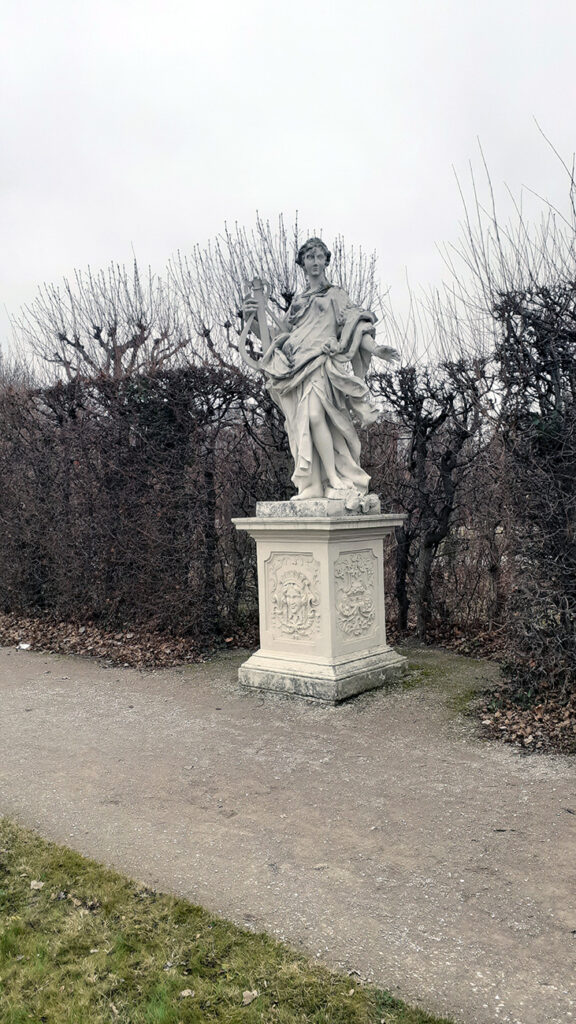
Amidst these sculptures, I sensed a profound connection to the past – a glimpse into the culture, beliefs, and mindset of a bygone era. While many may pass by these artworks fleetingly, I took the time to observe, capturing their essence through my lens. The historical depth embedded in these sculptures reflects the religious and governmental influences of the time, creating a captivating narrative that still resonates in the present.
Visiting National Library of Austria
Continuing my journey of artistic immersion, I ventured from the enchanting Belvedere Palace / Museum to the grandeur of the National Library of Austria. This library, a creation contemporaneous with the Crystal Palace, stands as a testament to the opulence of Kaiser VI’s era. The moment I stepped inside, I was greeted by the grandeur of countless ancient tomes, each thick and laden with history.
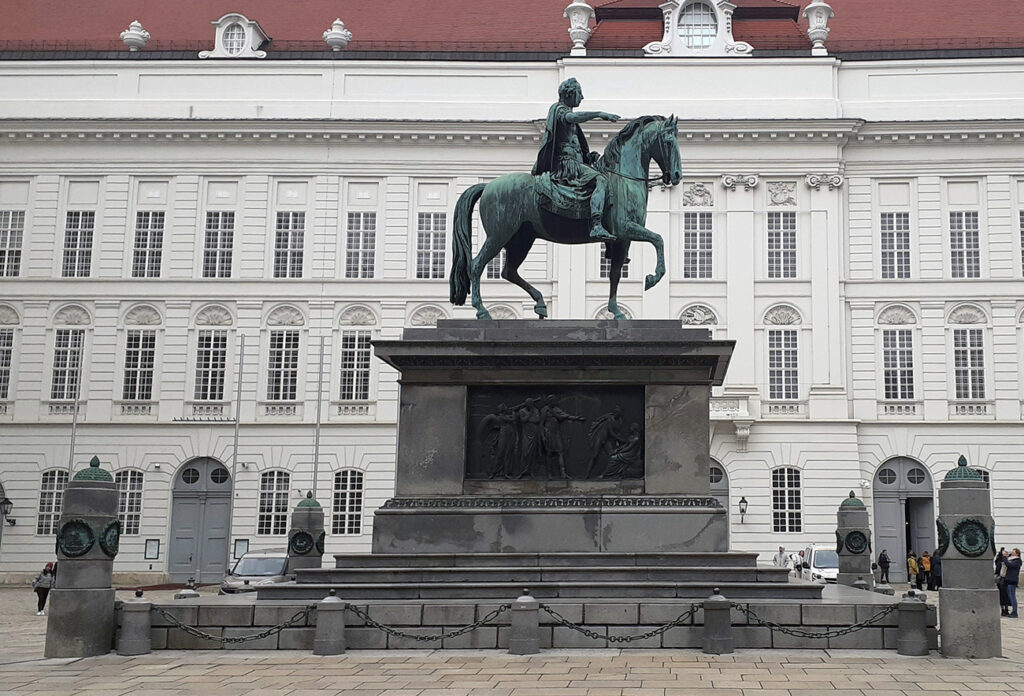
The library’s bookshelves, adorned with intricate decorations, and its ceiling, reminiscent of ancient Catholic churches, create an atmosphere that transports you back in time. It’s not just a repository of books; it’s a sanctuary of knowledge, a living artifact of Austria’s intellectual heritage.
As I wandered through this literary haven, I stumbled upon a small yet captivating photo exhibition. Here, the lens of the renowned American photographer Yoichi Okamoto documented the aftermath of World War II and the resultant destruction within Austria. Okamoto , known for his insightful take on historiography, presented a narrative through images that spoke volumes.
Among the photographs, an image of the famous Vienna carousel, charred and desolate after the war, left an indelible mark. The exhibition didn’t just chronicle the physical ruins but also showcased the faces of the politicians and policymakers who navigated Austria through those tumultuous times.

Inside the library, statues of eminent Austrian personalities stand as silent witnesses to the nation’s rich history. Each sculpture, meticulously crafted, adds another layer to the immersive experience, making the National Library not just a repository of books but a living gallery of Austria’s cultural and political evolution.
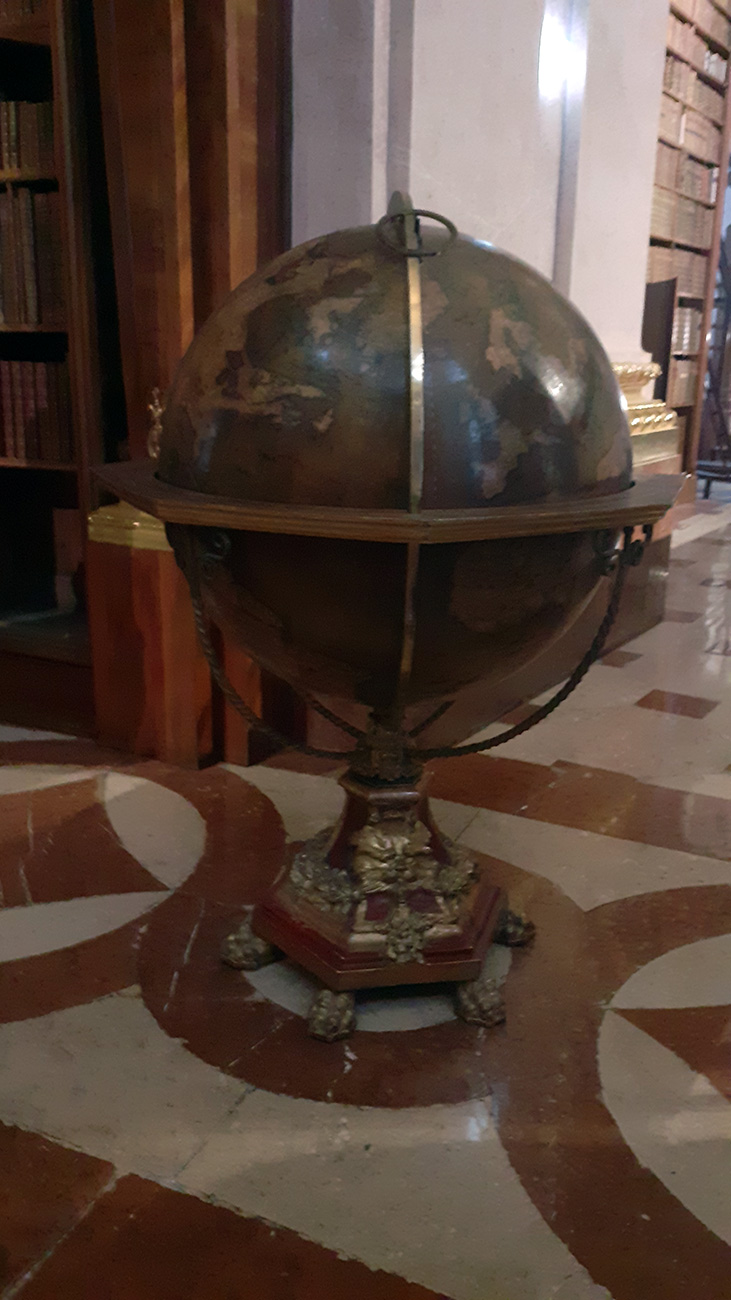



Amidst the volumes of ancient wisdom in the National Library of Austria, there exists a captivating section that beckons with the whispers of history. Displayed in showcases are pages from books that echo back to the 6th century AD, a mesmerizing journey that spans over 1400 years. Sheets and documents from the 12th and 13th centuries reveal the meticulous craftsmanship of scribes who adorned the pages of old Bibles and Christian texts with gold and silver ink, a testament to the revered artistry of that era.
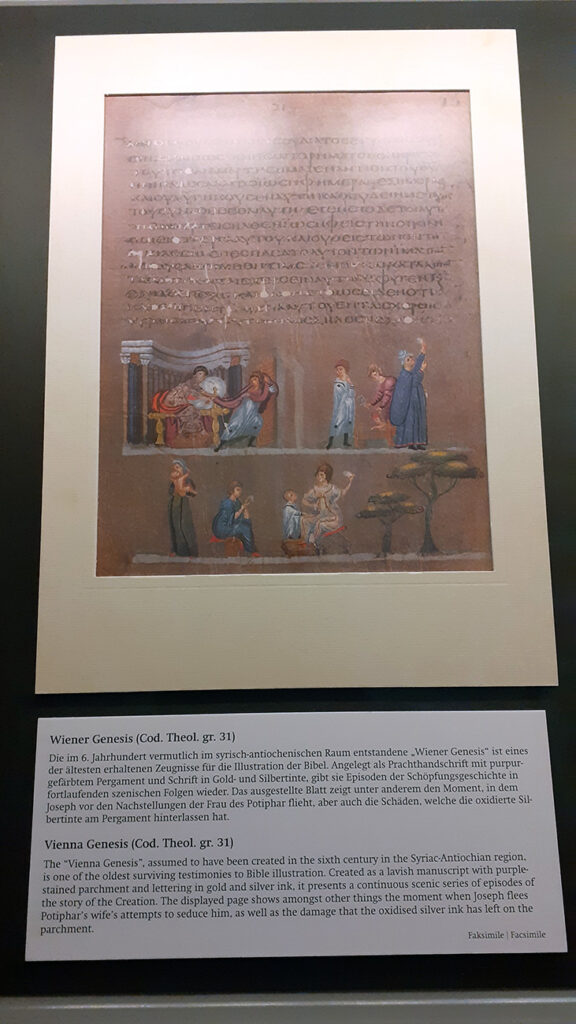

This intricate detail underscores the importance placed on illustration and artistry in Christianity, diverging from the practices of the time’s other major religions. A stark contrast arises, notably, with Islam, where the depiction of faces and images was considered forbidden. The juxtaposition of religious practices is like a visual time capsule, offering insights into the divergent paths of faith.
As I look in to my memories from the past in tracing architectural echoes, the library’s contemporary in Iran, the Chahar-Bagh School in Isfahan, built during the Safavid era, stands as a testament to an era gone by. Unfortunately, the library of this school fell prey to the ravages of an Afghan attack, highlighting the fragility of historical structures.
Among the myriad images that captivated my attention within the library is the portrayal of the Minerva Goddess of wisdon and Knowledge adorning the dome’s roof. This intricate engraving speaks volumes about the reverence bestowed upon science and scholars during the library’s inception, creating an enduring tribute to the pursuit of knowledge that transcends time.
I hope one day we can visit these places together, Arad. There’s so much to see and learn, and I know you’d love the adventure just as much as I did.
With love,
Dad
